How to Stop Stack Drain Backups in Multi-Unit Buildings
How to Stop Stack Drain Backups in Multi-Unit Buildings
Picture this: you’re the property manager for a 12-story apartment building. Week after week, your maintenance team is constantly getting work orders for drain backups, clogs, and overflows on floors one through four due to the drain stack. It’s getting to the point where other maintenance is neglected in favor of these frequent drain emergencies.
How can you stop your drain stacks from backing up into units and get your facility back on track?
At State Chemical, we manufacture and distribute biological and chemical solutions for various applications, including drain maintenance. When your piping is oriented in a way that leads to frequent problems, it can feel like there’s no feasible solution, but it is possible to prevent these problems with maintenance.
To help you stop your stack drains from backing up into units, we will explain what causes stacked drains to experience backups, the consequences associated with these backups, and how to prevent backups. After reading, you’ll be equipped to handle the drain problems in your building.
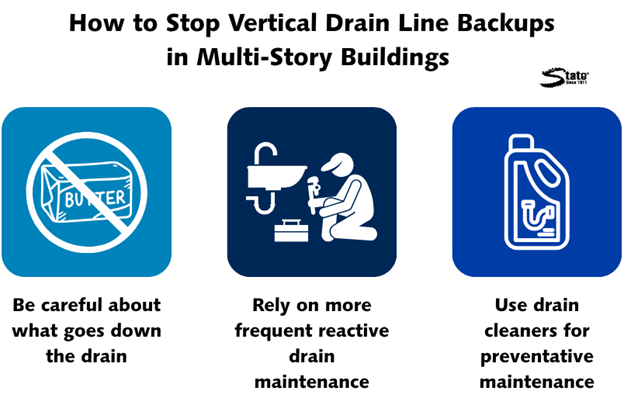
What Causes Vertical Drain Line Backups in Multi-Unit Buildings?
In any multi-story building, the piping system will have drain stacks, meaning that more wastewater goes through the lower-floor pipes than the top-floor pipes.
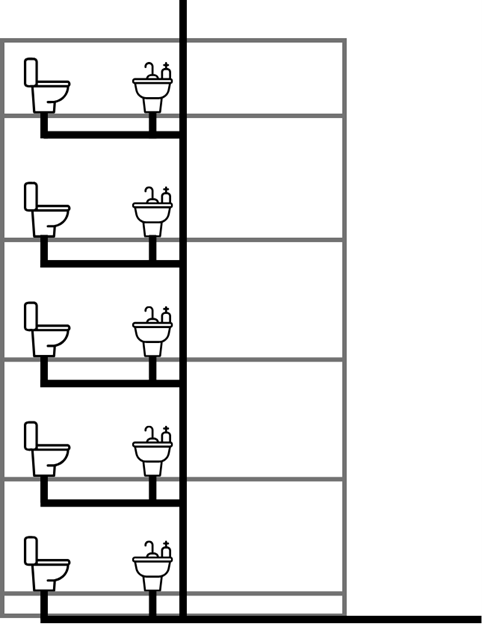
Think about it this way: let’s say that in your building, there are 20 units per floor, and you have 12 floors. On floor 12, the pipes only handle the wastewater from the top 20 units. But on the first floor, the pipes see the wastewater from all 240 units in the building.
When the lower floors are constantly handling so much wastewater, they’re seeing a lot of fat, oil, and grease (FOG) buildup, as well as the buildup of other organics. When the pipes take on too much buildup, less pipe space is available, and water flows more slowly.
This can cause slow drains in lower floors, and if the buildup gets bad enough to clog the pipes, it can cause backups into the drains of these lower-floor units.
Consequences of Buildup in Drain Stacks
Buildup in stack drains can be a contributing factor to many different problems for your facility.
Drain Clogs and Backups
Firstly, buildup can more easily lead to drain clogs and backups in stacks. These can be inconvenient, disruptive, and sometimes costly to repair.
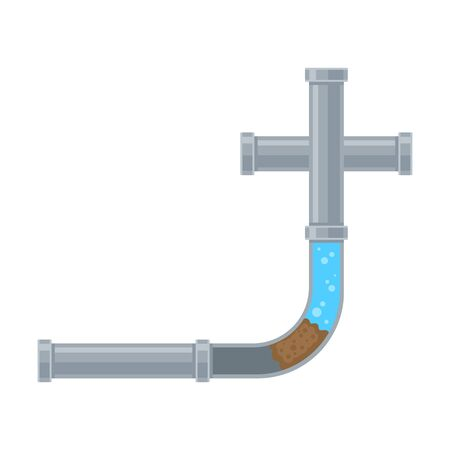
Consider a clog so deep in a pipe that you have to call a plumber to take apart the drain. Not only will you be dealing with the drain issue itself but with the expense and inconvenience of reaching the clog. This can cause collateral damage and frustrate tenants.
Drain Overflows
If the drain clog escalates into an overflow, you’ll be facing a more severe issue.
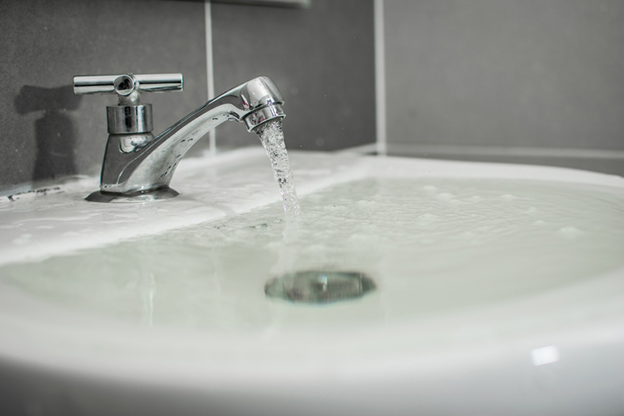
In the event of a drain overflow, your building will require emergency maintenance. If you’re unable to complete this yourself, you’ll have to call an emergency plumber, and that can become pricey.
Additionally, overflows are likely to cause water damage and other collateral damage to the surrounding area. While repairs are being completed, this also means inconvenience to tenants in rentals and an inability to accommodate guests in businesses like hotels.
Pipe Damage and Water Damage
When buildup is consistent enough—or when clogs and overflows are bad enough—you’ll likely experience damage to surrounding areas.
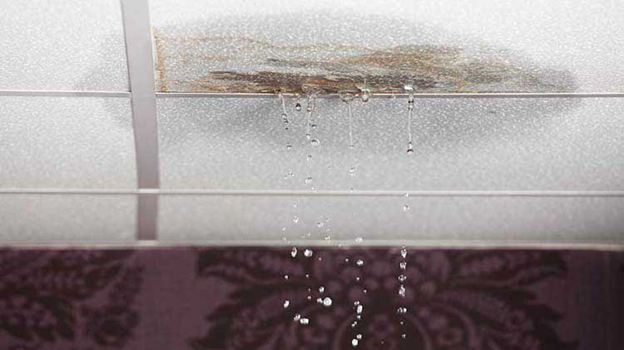
FOG buildup in particular is known to damage pipes over time if not controlled. This can necessitate pipe repair or replacement down the line, especially if the problem results in pipe rot.
Then, if drains overflow, water damage is probable, especially if the problem isn’t immediately treated. This will require even further attention and repairs.
Tenant Dissatisfaction
Of course, these are the obvious logistical problems with drain buildup, but another negative result for your business is tenant dissatisfaction.

With frequent maintenance issues, any renter or guest will be unhappy. For them, it poses a constant inconvenience—a perpetual state of unease—returning at the end of a long day to groan, “Not again.” And this will come back to haunt your business.
Bad reviews will deter other prospective customers, and bad experiences make lease renewals and repeat visits unlikely. Backups from drain stacks aren’t your fault, but they’ll still go a long way in dictating your guests’ decision-making.
How to Stop Vertical Drain Line Backups in Multi-Story Buildings
To stop backups from your building’s stack drains, you have a few different options:
Be Careful About What Goes Down the Drain
While it’s not possible to completely curb FOG drainage, you can educate your facility about what can and cannot go down the drain to avoid more serious mishaps. This can involve training employees, providing informational posters or emails for tenants, and more.
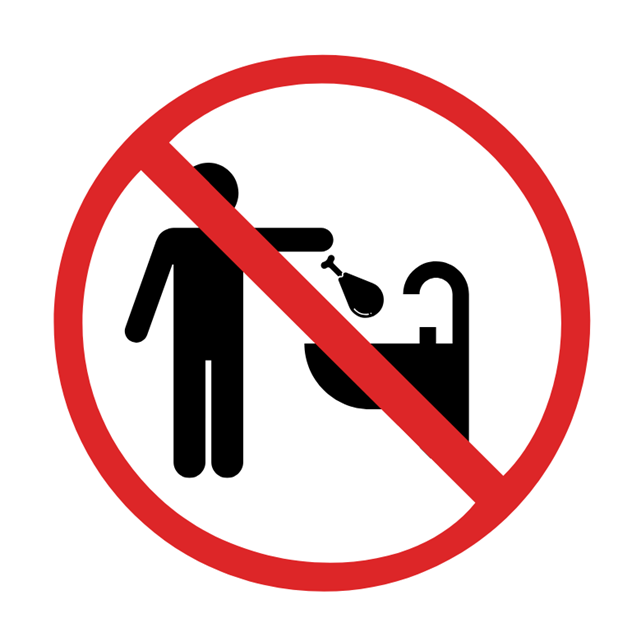
With fewer FOGs going down the drain, there will be fewer FOGs to build up and cause clogs, backups, and other problems. However, this only works if you have facility-wide buy-in, and if you’re running a rental property, it may not be feasible to get residents on board. Plus, accidents happen, and avoidance is not a guaranteed fix.
Rely on More Frequent Reactive Drain Maintenance
Your next option is to rely on more frequent maintenance. If you experience clogs or backups, you can choose to snake, use a drain opener, or call a plumber. These methods can be disruptive and costly, but they are solutions.

The downside is that you may still experience damage to pipes and nearby equipment, as well as the uncertainty of when issues will pop up. But reactive maintenance will effectively solve drain problems if you don’t have another choice, and it can be handy in an emergency.
Use Preventative Drain Cleaners
The most effective solution to stack drain backups is a preventative approach: commercial drain cleaners.
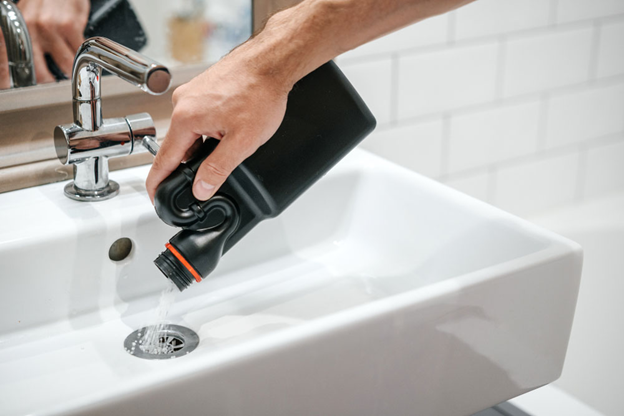
Drain cleaners use a biological or chemical component to break down FOGs before they can form buildup. When used in a building with drain stacks, continual use of drain cleaners will break down FOGs as they travel through the drainage system, ensuring that wastewater runs smoothly and causes no clogs or backups.
By strategically placing automated drain pumps throughout your building, you can automatically supply drain cleaner to your drains on a routine basis, keeping the pipes clear from the top floors to the bottom levels. This will remove buildup before it can form, preventing drain backups and other problems so that you and your tenants are more comfortable in the space and have time to devote to other matters.
Learn How State Chemical Can Help Your Facility Prevent Drain Stack Backups
When stack drains are involved, your building can experience frequent backups and clogs. Now that you know how commercial drain cleaners can prevent these problems, watch this video to learn how State Chemical can help you stop buildup in drain stacks.








